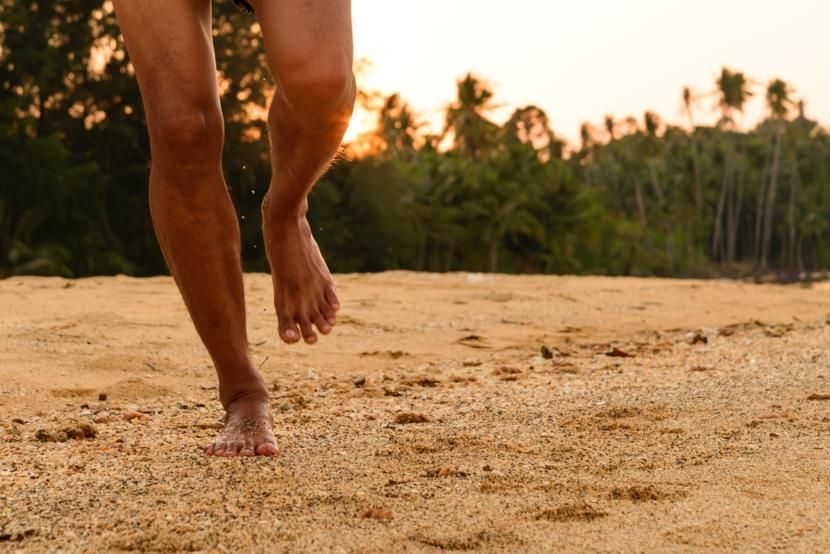Running Barefoot Has More Benefits

Running barefoot may be more beneficial than running with cushioned shoes, according to a study published in, Nature. Runners using cushioned shoes usually land on their heels when those running barefoot may land flat-foot or on the balls of their feet, say researchers. According to Daniel Lieberman, PhD, professor of human evolutionary biology at Harvard University, and colleagues, using cushioned running shoes may seem to be very easy, but it may lead to injuries in the long run.
Motion and force analyses conducted by the researchers show that the collision force is smaller when runners land on fore-foot, when compared to those who land on hind foot. Some of the anecdotal reports do show that barefoot population has lesser injuries. But more studies are required to see whether it is people who are barefoot who have lesser injuries or those who wear minimal foot wear like sandals and moccasins.
Runners generally avoid forceful impacts by running on fore foot or the middle of the foot. This force, which may be equivalent to two to three times the body weight, is often experienced by those who land on heels while running. Lieberman explains that people who run barefoot have a totally different strike when compared to those who use shoes. “There is a general belief that running barefoot is dangerous when actually one can run on the hardest surface without much discomfort," adds Lieberman. “Few calluses on the feet may help them to avoid injuries," he adds.
In this study, the researchers analyzed the running styles of five different groups of people. The different groups include U.S. athletes who always wore shoes, runners from Kenya who grew barefoot but now use shoes, adult runners from U.S. who wore shoes but now run barefoot, adolescents from Kenya who have never worn shoes, Kenyan adolescents who always wore shoes. You can use minimalist running shoes to get the same benefits of barefoot.
Results showed that most of the shod runners experience a large and sudden collision force when they run. This amounts to an average of 960 times per mile they run. This increases the chance of repetitive injuries in the runners. The impact force on the foot was found to be lesser in those who land on the middle or front foot.
“Striking the heel while running is very painful on barefoot as it causes a large collision force when the foot lands on the ground," explains Madhusudhan Venkadesan, PhD, a co-author and researcher in applied mathematics and human evolutionary biology at Harvard. Barefoot runners are able to reduce this collision force as they point their toes more at landing. This helps to have a more compliant leg and decreases the total mass of foot that comes to a sudden stop on landing.
“Most of us are used to running with shoes, so running barefoot is something that we have become comfortable with," says Lieberman. Running shoes available in the market are designed to make the striking of heel more comfortable and easy. “Those who wish to start running barefoot should do so gradually by building the strength of the muscles in the calf and foot," suggests Lieberman.














